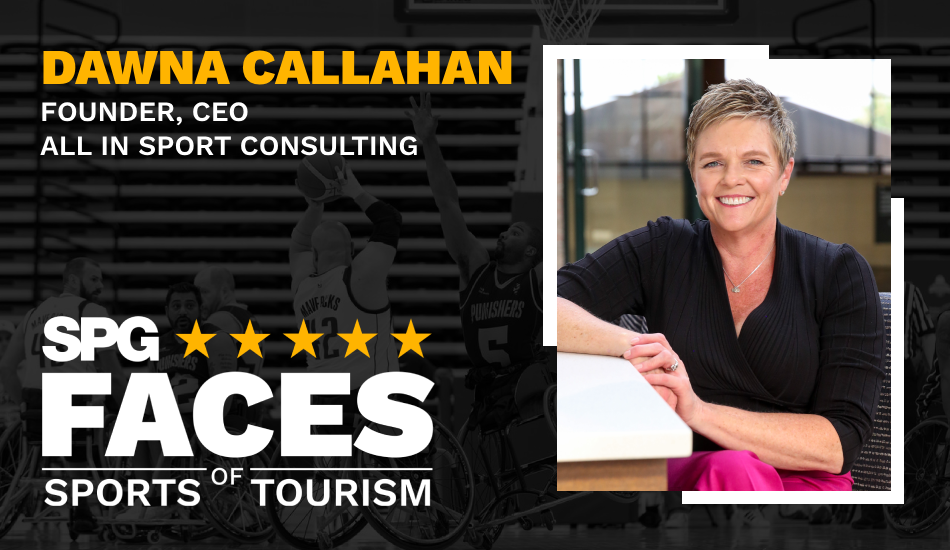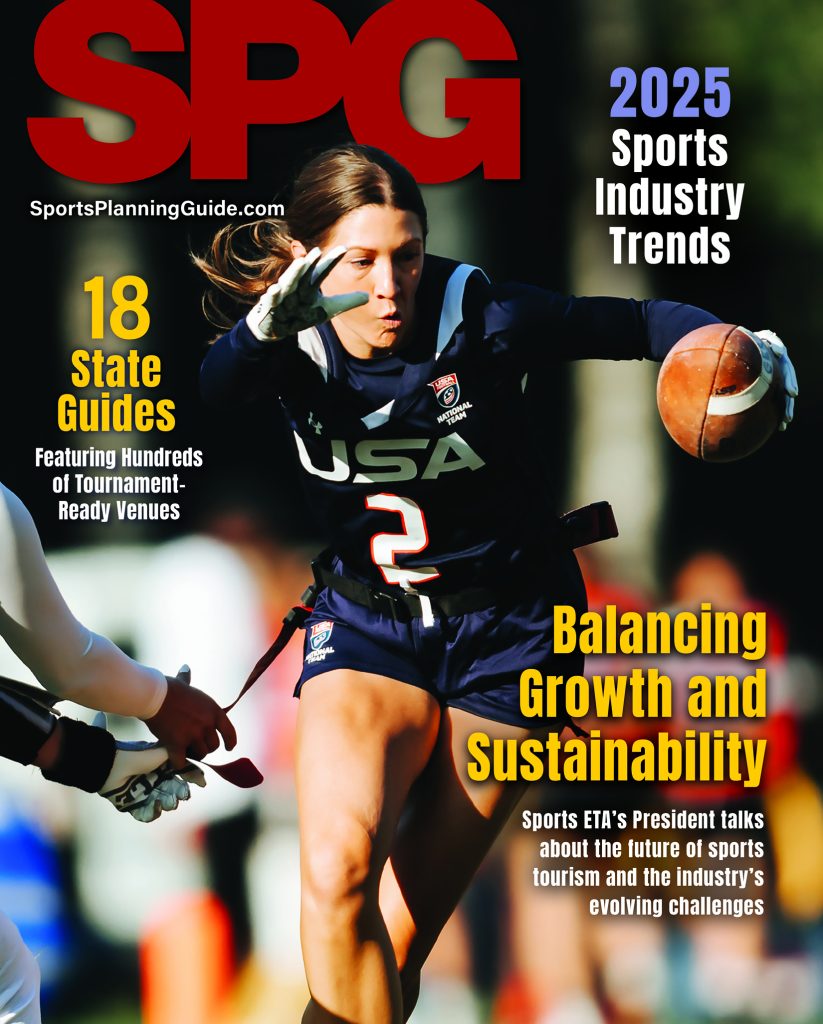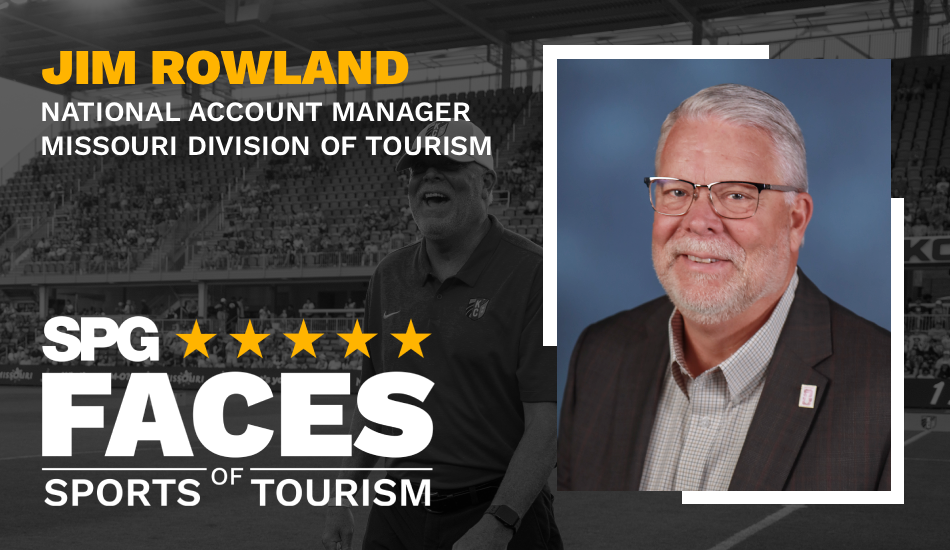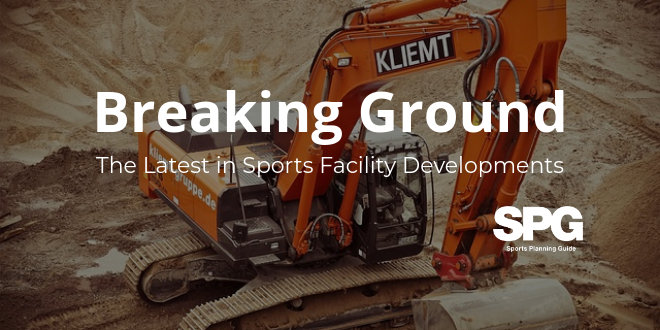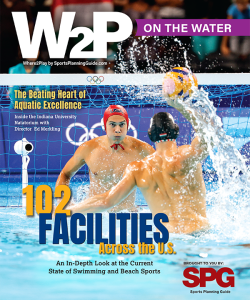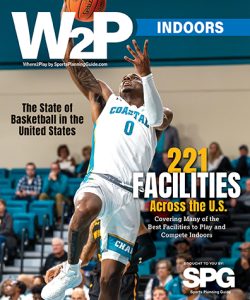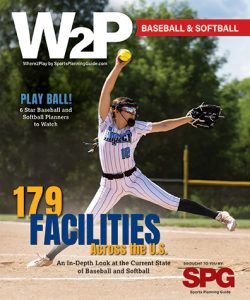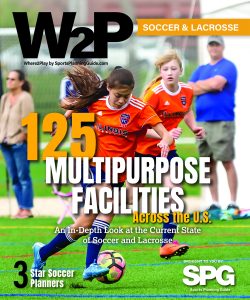Leading the charge: Dawna Callahan’s mission to advance adapted sports and redefine inclusion
In this edition of Faces of Sports Tourism by Sports Planning Guide, we speak with Dawna Callahan from All In Sport Consulting. Callahan’s journey highlights the transformative power of sports and her dedication to advancing adapted sports—a path that reflects a deep commitment to ensuring athletes with disabilities have opportunities and representation. Her lived experience as an athlete and leader drives her mission to build structured pipelines, advocate for inclusive leadership and harness the upcoming LA28 and Salt Lake City 2034 Paralympic Games to reshape disability narratives across the U.S.
Callahan urges organizations to involve disabled leaders in planning events, designing accessible facilities and launching initiatives. Through her work, she demonstrates that prioritizing inclusion not only drives progress but also strengthens communities and unlocks the full potential of sports.
Read more exclusive content with Sports Planning Guide’s best practices!
Tell us about your background
Without realizing it, my exposure to sport as a child with a disability was pivotal in influencing my education and professional choices. Sport has impacted my life from a young age. My dad, a high school coach and athletic director, helped start a swimming program for kids with disabilities in my hometown. He would open the high school pool for Red Cross-swim lessons in the summer and asked why there weren’t any children like his daughter being offered the opportunity to get in the water. His cycling club also built me my first handcycle out of a three-wheeled bike when I was 10 so I could ride bikes in the neighborhood with my friends. Whenever my family went camping, I was always included and involved in all the outdoor activities like rafting, fishing, and hiking. My brother and I had many intense seated-Nerf football and basketball games in the hallway of our childhood home. It wasn’t until I focused my career on adapted sport that I realized that all these childhood experiences had influenced my chosen profession, which is to ensure that people with disabilities have the opportunity to experience the power of sport as I did.
Another pivotal moment was when I started skiing regularly at Alpine Meadows, home of the Tahoe Adaptive Ski School (now Achieve Tahoe). I found “my people” at the Ski School—other young people with disabilities who wanted to be active and push the limits when it comes to living a healthy life. Fresh out of my first stint in graduate school, I had to take out a personal loan to purchase my first mono-ski to become a more advanced skier.
It was my experiences in Tahoe that flipped my career choice upside down. I went back to graduate school to pursue a master’s degree in Recreation Management and decided to move on from high-tech HR in Silicon Valley to adapted sport in hopes of making a difference in the movement.
Once I started my career, my identity as an athlete evolved even further as I ventured into wheelchair racing and competing in marathons. I was what the community would consider a ‘late bloomer’ to the sport. I was competing with college students and was old enough to be the mother of some of the younger athletes. I was physically built for the sport with a powerful upper body and long arms, but I had a few more years of wear and tear on my body.

During my marathon training, I was also a full-time professional, so I had to keep up with my work commitments, responsibilities, and regular work travel while training. It was a grueling schedule. For me, training and competing in marathons symbolized my ability to endure. It also showed me how I can push through an incredibly structured schedule, juggling work and athlete life, both of which are very demanding. I also had to learn to pace myself and take some time for rest and recovery from training. It’s not easy knowing you need to get your miles in for the week, but also knowing when you need some downtime—physically and mentally. I think this experience became beneficial when I launched All In Sport Consulting.
What inspired you to launch All In Sport Consulting?
I decided to launch All In Sport Consulting because I had worked in national adapted sport organizations for years—none of which had leadership who had a disability. No one that I reported to had the lived experience of being a disabled sport professional or a disabled athlete. Representation matters! I knew I had an incredible network from years of working in the movement and that the movement needed representative leadership – people with disabilities to actually lead the disabled sport movement. I also knew there were gaps and needs throughout the community that I could help with to advance the movement and make a positive impact. With All In Sport, I didn’t have to play the political game. I would be free, liberated to support efforts and advocate for much-needed change in a way that non-disabled leaders can’t.
I knew launching All In Sport Consulting would be challenging as there’s so much education and awareness that needs to be built around adapted sport. Currently, there’s not a lot of money in the industry, and I wasn’t sure if I’d be able to make a living. But I knew that if I put my marathon training into effect and focused on the long haul, I’d begin to identify new opportunities—and that’s exactly what happened.
Not only am I working with grassroots adapted sport organizations as I initially set out to do, but I also diversified my business by working with sports tourism organizations and sports commissions. All In Sport also led me to become an adjunct professor, teaching a course focused on ‘Disabilities in Society’ to students in sport management, recreation management, and healthcare services who will interact with the disabled community as they enter their professional careers. My business has opened my eyes beyond those working directly in adapted sport to a variety of sport-related businesses that need and want to be inclusive of individuals with disabilities.
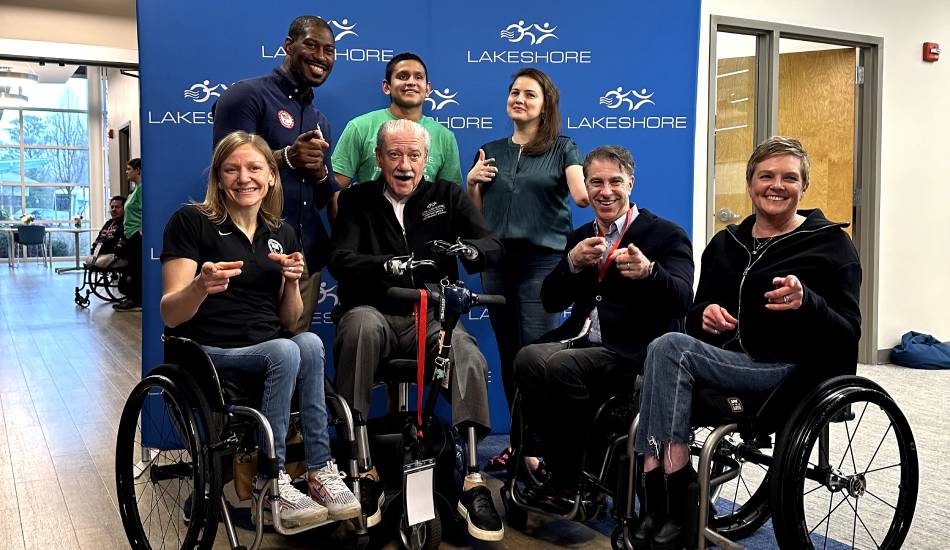
What would you consider your favorite part about your job?
The best part is working with clients who “get it” and want to make an impact in the adapted sport community. I appreciate the opportunity to advocate as a disabled sport leader and athlete. My lived experience has provided me with so many valuable personal and professional insights when it comes to sharing my expertise in the movement with clients.
I also enjoy being able to pivot quickly and launch entrepreneurial-focused initiatives such as the first-of-its-kind Adapted Sport Economic Impact Report along with the incredibly successful annual Adapted Sport Leadership and Business Symposium (LABS). LABS, as it’s known around the community, welcomes leaders from the adapted sport industry and other aligned industries for progressive sessions and meaningful conversations to advance the adapted sport movement and expand our impact.
What are some of the most significant strides you’ve seen in access and inclusion for athletes with disabilities?
A new standard was set at the 2012 London Paralympic Games as London launched some edgy and effective marketing leading up to the Paralympics, noting that the Olympics were just the “warm up” to the Paralympics. I love this! London Paralympic Games leadership created a buzz about the Games and created fandom all across the UK. Before the Games, the UK launched Channel 4, a TV station highlighting commentators and broadcasters with disabilities in front of the camera and disabled professionals managing the production behind the camera as well.
The recent Paris Paralympic Games also did an incredible job positioning Paralympic athletes as competitors rather than participants—after all, Paralympians are the world’s best athletes with physical disabilities and should be viewed as such. Media started to focus on athleticism and competition rather than disability. Spectators attending the Games became fans of sports they had never heard of before, like blind soccer, boccia, and wheelchair rugby. Paralympic fandom grew like never before.
I am anxious to see what LA28 has planned for the Paralympic Games, along with NBC’s coverage. This is an opportunity of a lifetime to shift the disability narrative across the entire country and create social change for all disabled Americans. On the heels of LA, we have another opportunity to keep the momentum going with the Salt Lake City 2034 Winter Paralympic Games. Through LA28, there are incredible opportunities to shift how American media views disability. Let’s get rid of references to athletes being “wheelchair-bound” once and for all. Let’s inform employers about the valuable skills and adaptability that exist across the disability community. Let’s discover that accessibility across communities is good for everyone, not just the disabled. The opportunities to change the disability narrative through the LA28 Games are endless.
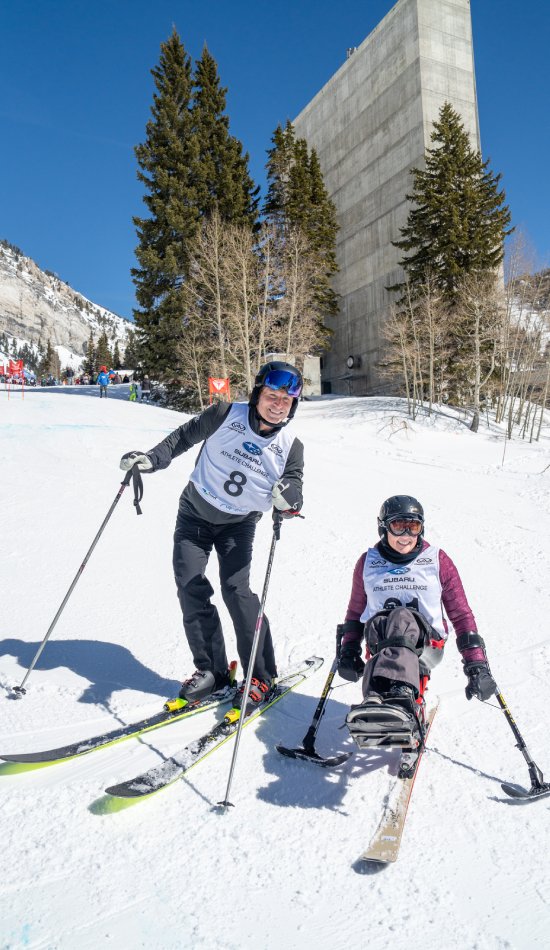
What are some key challenges that still need to be addressed in the adapted sport movement?
I’ve done a post-Paralympic Games analysis and recap following the Toyko, Beijing and Paris Games. A few common threads that exist through all are:
- Media coverage: Yes, NBC provided more coverage during the Paris Paralympic Games and included disabled commentators on the ground in Paris, but it’s still not enough mainstream coverage to reach the masses and raise awareness. Adapted sport and Paralympic sport events happen throughout the year in communities around the country and internationally. These events also deserve media coverage. With better coverage year-round, we will build fandom around the movement. You can’t become a fan if you don’t even know the movement exists.
- Awareness and Structured Pipeline: Many leaders in the adapted sport movement believe it would be valuable to create a centralized structure within the U.S. to identify and develop athletes. Great Britain, Australia and Japan have much smaller populations than the U.S. but have developed high medal-producing Paralympic programs. China also continues to dominate as a top-tier medal producer. Far too often, we hear how para sport athletes in the U.S. discovered sport by coincidence or happenstance. To shine at LA2028, we must start working on this now.
Following the Paris Paralympic Games, CNN reporter Jack Hillcox reported that “So far in the 21st century, the U.S. has only failed to top the Olympic medal table once, but its average place in the Paralympic medals table from 2000 until Paris was fourth.” We need to tap into our local communities, like schools, universities and rehabilitation facilities, to introduce the movement in a more structured way to identify the next generation of Team USA athletes. I am ready and willing to support such a structure to engage more disabled individuals in sport and advance the movement.
What is your vision for the next decade of adapted sports?
Over the next 10 years, the U.S. will have hosted two Paralympic Games, the LA28 Summer Games and the Salt Lake City 2034 Winter Games. Within the next decade, I hope more people throughout the U.S. know about the Paralympic Games and are following the movement. I hope the media realize that there are adapted sport fans out there who want to watch events and cheer on their favorite teams and athletes. I also hope that the U.S. media move beyond the inspirational narratives around disabled athletes, focusing instead on athleticism and competition.
I hope that more business and sport leaders acknowledge the valuable business case around adapted sport and invest in providing more opportunities for disabled individuals to be active and have access to sport. This isn’t much different from how investors are now supporting and elevating women’s sports more than ever. I also hope that in 10 years, National Governing Bodies and USOPC leadership will have an effective structure in place that both identifies and develops disabled athletes to podium success. Finally, over the next decade, I hope that the movement is included in all sport conversations as it focuses on disabled athletes, building fandom across the movement and creating positive experiences for disabled spectators.
What’s your favorite sport to play or watch?
I am glued to the TV and streaming anytime the Paralympic and Olympic Games come around. Summer, Winter, Team Trials—I love it all! I am a true fan of cheering on the world’s best athletes and also watching the world come together through the power of sport.
Having worked as the “Team Behind the Team” during three Paralympic Games, I am a super fan. I’ve had the amazing honor and privilege of supporting Team USA athletes, getting to know their families and watching them develop through the athlete pipeline into Paralympic champions. It’s the most incredible and moving experience to sing the national anthem at a Paralympic Games while watching the stars and stripes raised throughout a venue. At the Rio Games, I attended an event where a friend won a bronze medal, and Team USA had a podium sweep. It was a once-in-a-lifetime experience.
I also keep track of what’s happening in the wheelchair marathon racing world. The great news is that TV coverage of the Abbott World Marathon Majors around the world also follows wheelchair racers along the course. In addition to the coverage, I enjoy seeing the prize purse for racers grow through the Abbott World Marathon Majors.
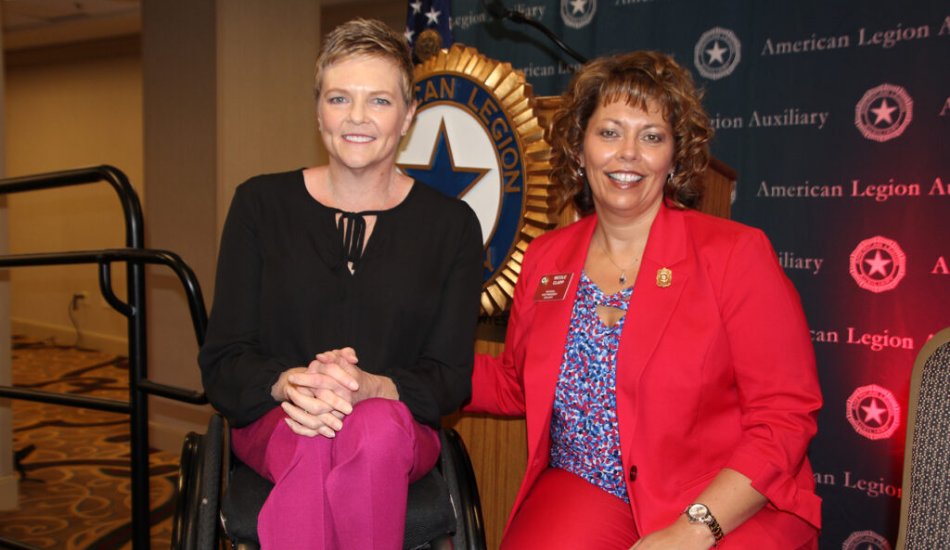
Who do you root for?
I am a 49ers fan, but with a bit of a caveat as of late. My dad’s high school football coach was NFL Hall of Fame coach Bill Walsh. My family is all 49er Faithful, although, in the past few years, the organization was sued by a group of disabled fans for extensive ADA violations—2,600 ADA violations, to be exact—related to lack of accessibility and multiple architectural barriers throughout Levi’s Stadium. So yes, I’m still a Niners fan, but a bit of my Faithful heart is broken as a disabled fan. The organization excluded my people, my community, making experiences for disabled spectators subpar, stressful and exhausting.
This is why it is so critical that sport organizations ensure disabled fans have an equal and positive experience cheering on their teams. First, it gets expensive if you don’t, and second, it creates a major PR issue. So not only will the 49ers organization pay out more than $50M to plaintiffs, legal fees and fixing the 2,600 violations, but they also now have a PR crisis on their hands when it comes to engaging disabled fans.
I also married into Red Sox Nation, so I always enjoy a good series between the Red Sox and Yankees. Hopefully, 2025 will be a better year.
In the last few years, my husband and I have also enjoyed watching CU Buffs football with the addition of Coach Prime. It’s been interesting to watch how Prime’s leadership has transformed the Buffs fandom throughout Colorado. If we’re home on the weekends in the fall, you’ll likely find a collegiate game on the TV on Saturdays and NFL games on Sundays.
What’s one piece of advice you would give to sport tourism organizations and professionals for engaging the disabled community?
My one piece of advice is to remember the mantra, “Nothing about us without us.” This is a mantra that runs deep in the disabled community to ensure inclusion and involvement in decisions related to the disabled population. If you are looking at bringing an adapted sport event to your community, involve disabled leaders and advocates in your bid and planning processes. If you are looking to build a new or renovate an older sport facility in your community, involve disabled leaders to ensure universal design and accessibility are incorporated into your plans. Also, if you are looking to launch an adapted sport committee in your organization, ensure disabled athletes, coaches and leaders are involved, engaged and have a voice.
No one knows disability initiatives better than disabled individuals. Representation matters. The disability community is intersectional and makes up 15–20% of the population, so that’s almost one person in every household. By not including disability in various aspects of your organization, you’re not including a large percentage of your community’s voice.
Get in contact with Dawna Callahan
303.475.7030

